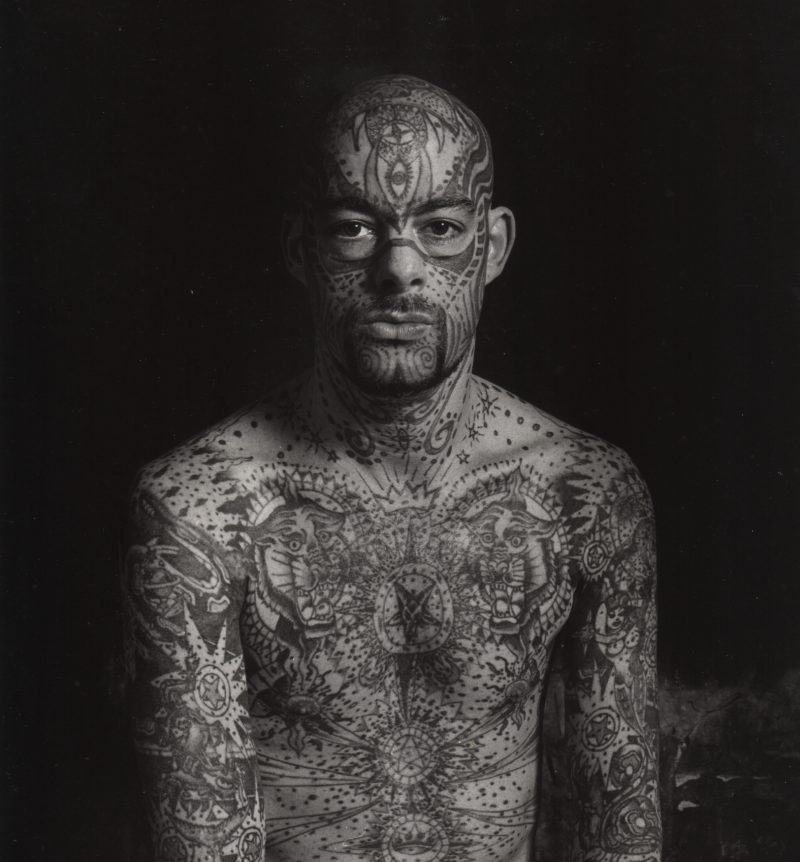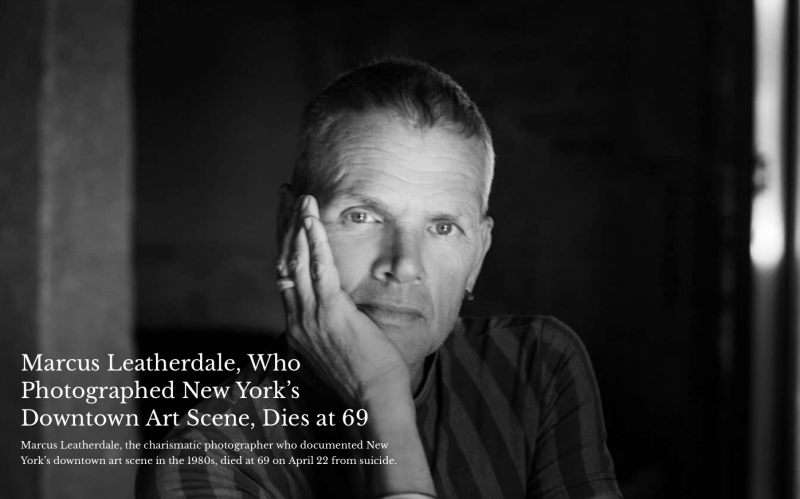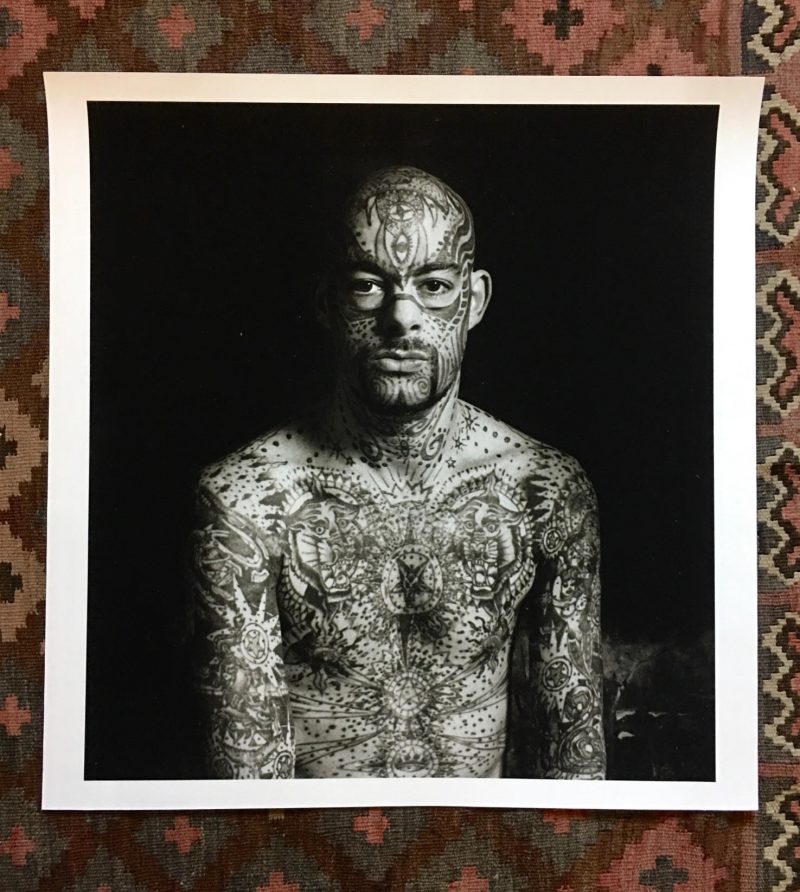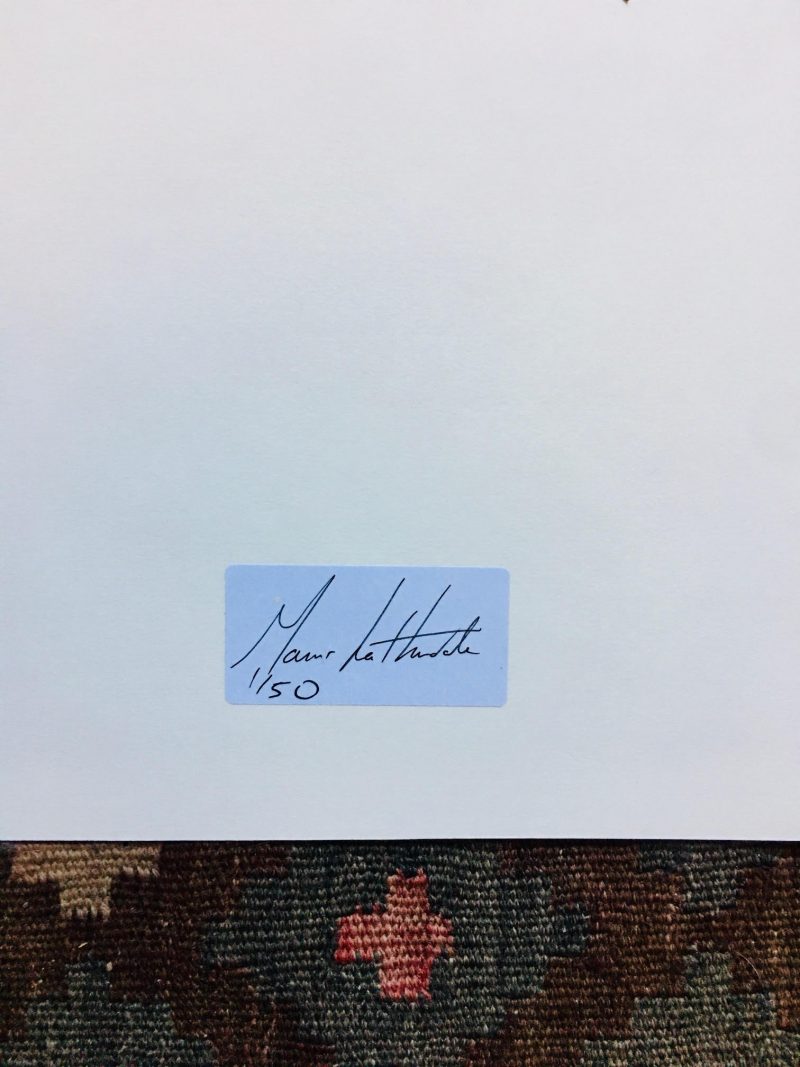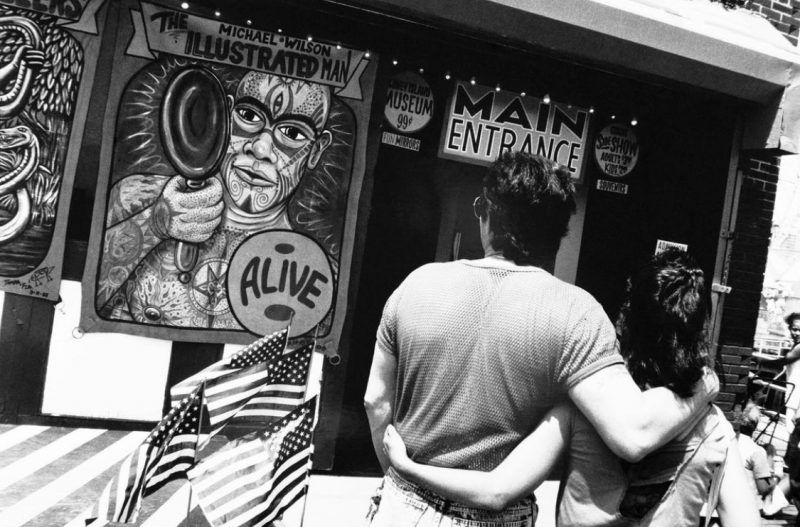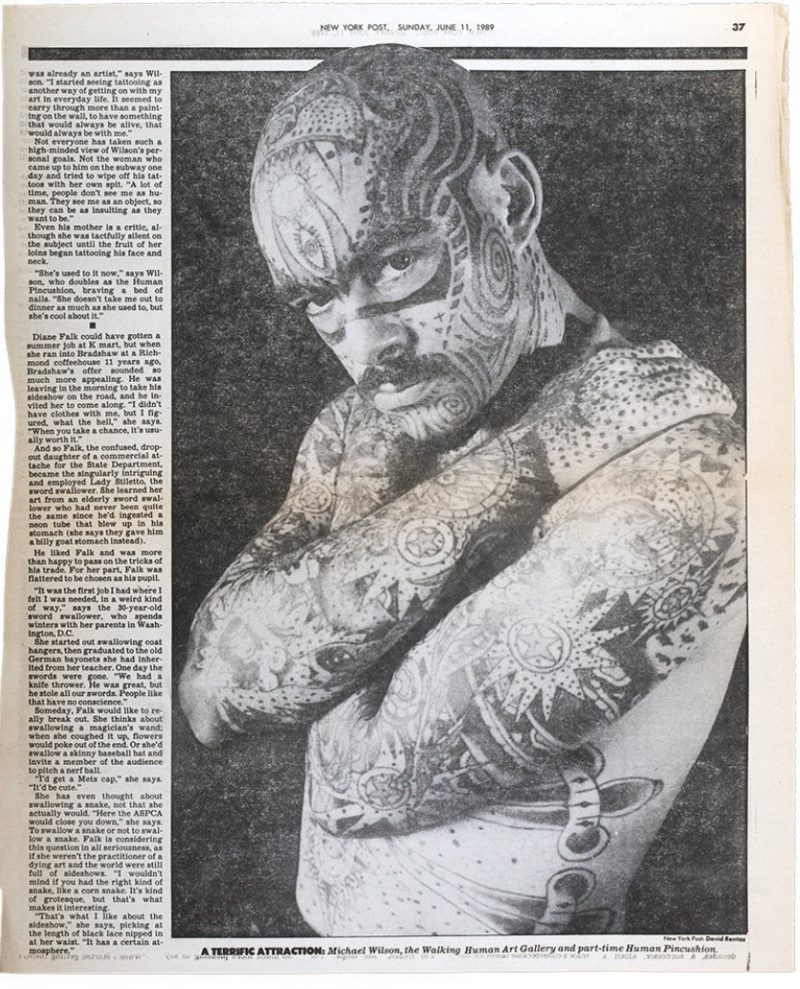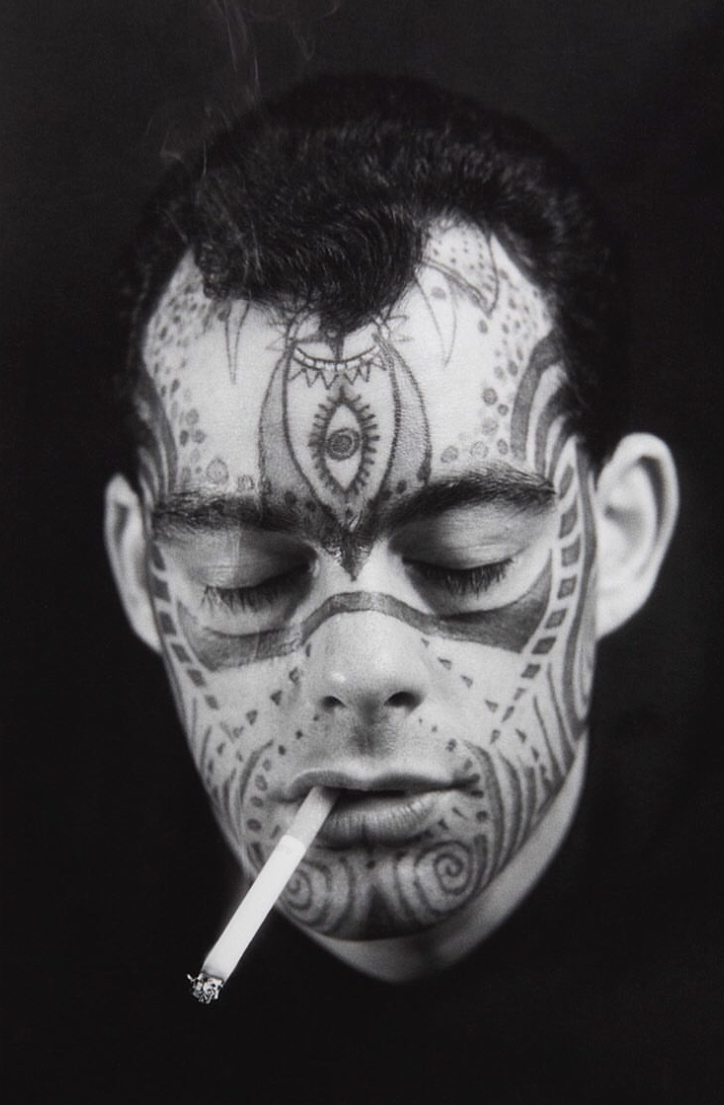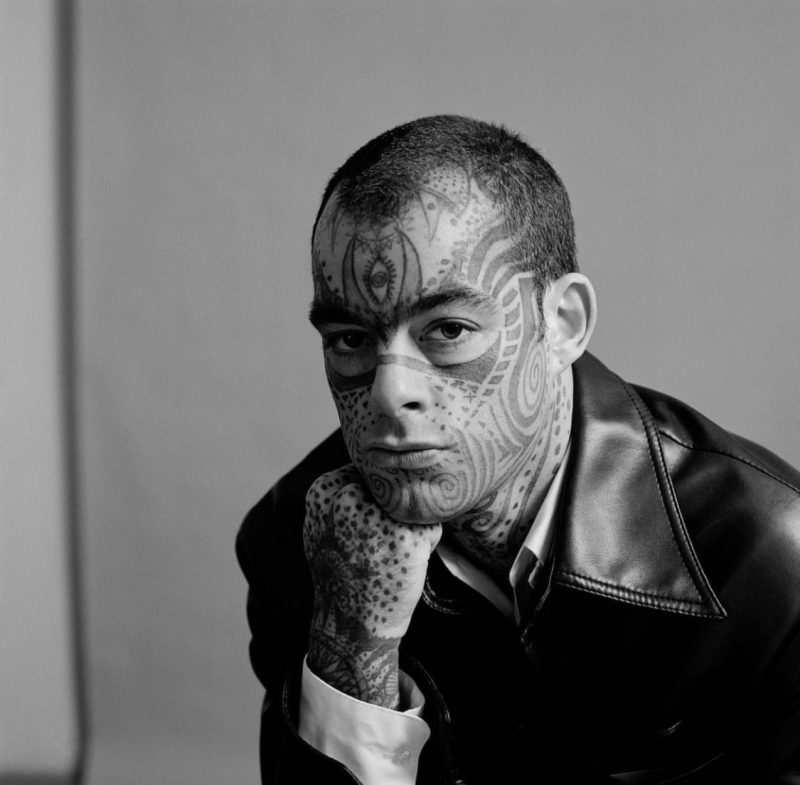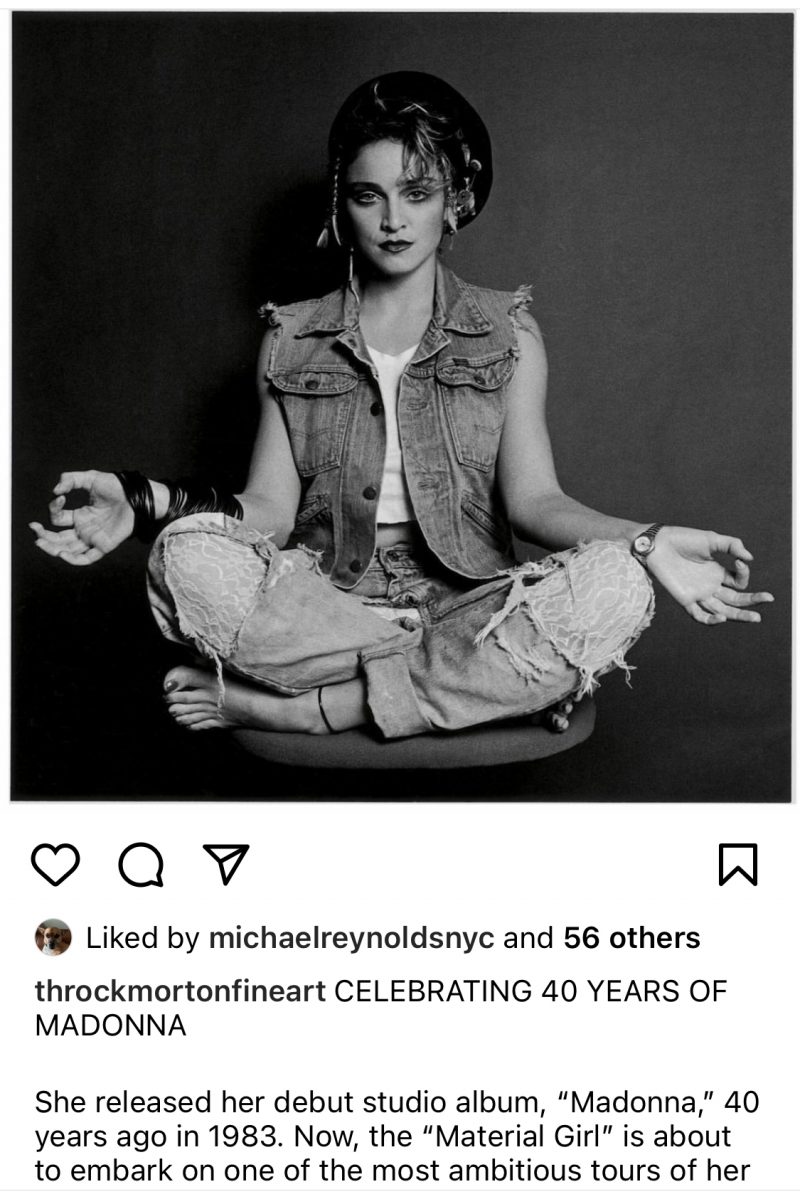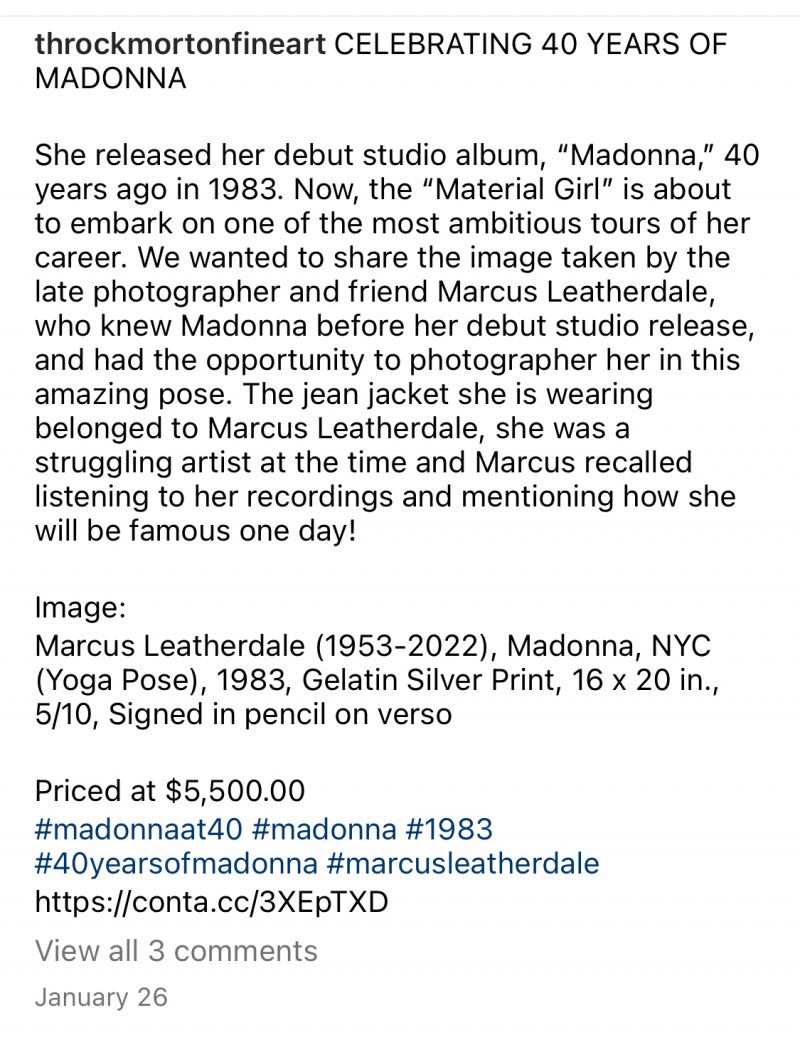‘Tattooed Man’ Photograph by Marcus Leatherdale 1985
Marcus Leatherdale, New York, USA, (18 September 1952 – 22 April 2022)
‘Tattooed Man, 1985’, Limited Edition Digital Photograph. Image is 20 x 18.5 inches. Print measures 21 x 21.5 inches. Archival Epson Matte Paper (cotton rag material).
Model is Mike Wisenhunt
Print is mint condition. Photographed in the 1985. Printed betwween 2014 & 2022, which is the period in which I collaborated with Leatherdale. Signed on verso of print, on adhesive archival label.
Limited edition 2/50. (1/50 is sold.)
Offered at USD$1500.
Special Limited Edition for La Petite Mort Gallery, Ottawa, Canada by permission & collaboration with Marcus Leatherdale.
Photographed in the 1980’s, Printed Between 2014 & 2022. Signed on label / verso of print, with letter of confirmation by the artist. The prints were made in a professional lab in Canada, by permission of Marcus Leatherdale, and signatures were hand written by the artist on archival labels, and shipped from Portugal, where the artist resided at the time ( see return address & signature on envelope).
https://www.indiegogo.com/projects/tattoo-mike-feature-documentary-film#/
TATTOO MIKE tells the story of a boy that runs away to join the circus. It is an intimate character study into the life of visual and performance artist Michael Wilson, exploring his marriage to a life of art and drive to define his individuality in a world that bucked against the extremity of his self created physical appearance. The film examines the ideas young artists of this era explored, taking controversial and outdated forms of traditional art like sideshow and tattooing and reimagining that art for a postmodern audience and the large role Michael Wilson played in that movement. Today the influence of that effort is ubiquitous: tattooing is everywhere and on everyone and the modern freak show is celebrated once again.
A NEW DOCUMENTARY LOOKS AT THE EXTRAORDINARY LIFE OF TATTOO MIKE WILSON
It’s impossible to tell the story of tattooing in New York City without mentioning Tattoo Mike.
When Michael Wilson arrived in the city during the early 1980s New York didn’t have the clean-cut and corporate image that it does today. It was a city struggling to survive, known for blackouts, riots, crime and urban decay. But it was also a haven for artists, musicians and anybody who wanted to live by their own rules. In other words, it was the perfect landing spot for a man who had left home to join the circus and make his way as an artist and performer.
In New York, Wilson found his niche. He became a performer at the revival of Coney Island’s sideshow. He painted staggeringly beautiful psychedelic works. And he got tattooed in the city’s thriving underground tattooing scene. Most notably, he had his face tattooed during an era when it was unheard of. Everything about Wilson was original and this inspired a young Ethan Hill.
“I wanted to be like him,” Hill explains. “I wanted to look exactly like that. I aspired to that, and I didn’t understand why. There was just something so magnetic about his presence in a photograph.”
Hill reached a point in his life when he was going to have to rethink his career and move out of the photography world when the idea of making a documentary about Tattoo Mike crept into his head. Initially he wasn’t sure how to do so, but by making the right connections and learning how to pull on narrative threads, Hill was able to document Wilson’s remarkable life in the film “Tattoo Mike: The Story of the Illustrated Man.” Over the course of 60+ interviews, a vivid picture of the enigmatic Wilson comes together.
“Working on this project has probably been the best thing that’s ever happened to me,” Hill says. “A certain freedom of autonomy came with doing this, in so much that I was able to pursue every line of interest and investigate every lead that presented itself. I met all of my heroes in the process, and it was sort of an accident, and it was all really relevant. One person led to somebody else who led to somebody else, and it was all either a direct connection to Michael or a really important historical historian or one of the doers, one of the game changers.”
In order to complete the film and share it with the world, Hill has put together a Kickstarter to fully fund the project. “Tattoo Mike: The Story of the Illustrated Man” is a work of passion that shines a light on a true original. If you’re remotely interested in tattoo history, particularly within New York City, you must check out this film.
Biography: Marcus Leatherdale
Montreal-born photographer Marcus Leatherdale (1952) has been exhibiting for more than 30 years in galleries worldwide. His work has been published in such magazines as The New Yorker, Vanity Fair, Details, and Elle Decor, featured in publications from Artforum to Interview, and is in the permanent collections as museums such as the Art Institute of Chicago and Austria’s Vienna Museum of Modern Art.
First known for his arresting portraits of New York City celebrities (Hidden Identities series-Details) in the 1980s, in 1993 Leatherdale began spending half of each year in the Indian holy city of Banaras. Based in a 200-year-old house in the old city, he began photographing the diverse and remarkable people there, from the sadhus (holy men) to celebrities, royalty to the Adivasi (tribals). Each year, for the six months he lives in India, he works out of his studio and then travels extensively, setting up makeshift studios in villages and carefully negotiating among some of India’s most elusive figures to make his portraits. In 1999, Marcus relocated to Chottanagpur, Jharkhand, where he has been focusing on the Adivasis (tribals) of India.
When not in India, Marcus is now based in Portugal (Luso Studio) and commutes between Europe and USA.
***
PRESS:
https://www.forbes.com/sites/nadjasayej/2019/09/23/from-madonna-to-andy-warhol-new-yorks-cool-kids-in-the-1980s/#69b6406068f1
https://www.anothermag.com/art-photography/12043/warhol-cookie-divine-marcus-leatherdale-out-of-the-shadows-new-york-80s
From Forbes Magazine:
When did you photograph Andy?
“I photographed Andy three times, first at the Factory at Union Square, sitting on a black couch next to a stuffed penguin, later I photographed him in an Issey Miyake tuxedo for Bodyworks. And lastly, I shot him at his new Factory, sitting next to a statue of Caligula.
The last time I ever saw Andy was at Jerry Hall’s birthday party at her uptown townhouse. We were sharing a downtown checker cab with Tina Chow, In conversation he mentioned that he never wanted to go to a hospital, he dreaded that he would not get out. It was a sad shade of things to come, as he later died of complications and dear Tina died of AIDS. I am the last man standin. – Marcus Leatherdale
New York in the 1980s
Leatherdale started his career in New York City during the early eighties. Leatherdale first served as Robert Mapplethorpe‘s office manager for a while and was photographed in the nude by the master, grabbing a rope with his right hand and holding a rabbit in his left. Thereafter he worked as an assistant curator to Sam Wagstaff. He soon became a darling of the then vibrant club scene and the fashionable media: Interview, Details, The New Yorker, Vanity Fair and Elle Decor presented his work. Later on he was featured in artsy publications as Artforum, Art Newsand Art in America. He documented the New York life style, the extraordinary people of Danceteria and Club 57 where he staged his first exhibits in 1980. Leatherdale was an acute observer of New York in the eighties. His models were the unknown but exceptional ones – like Larissa, Claudia Summers or Ruby Zebra – or well known artists – like Madonna, Winston Tong and Divine, Trisha Brown, Lisa Lyon, Andrée Putman, Kathy Acker, Jodie Foster and fellow photographer John Dugdale. For quite a while Leatherdale remained in Mapplethorpe’s shadow, but was soon discovered as a creative force in his own right by Christian Michelides, the founder of Molotov Art Gallery in Vienna. Leatherdale flew to Vienna, presented his work there and was acclaimed by public and press.
This international recognition paved his way to museums and permanent collections such as the Rheinisches Landesmuseum Bonn, the Art Institute of Chicago, the Australian National Gallery in Canberra, the London Museum in Ontario and Austria’s Albertina. Above all, his arresting portraits of New York City celebrities in the series Hidden Identities aroused long-lasting interest amongst curators and collectors.
In India
In 1993, Leatherdale began spending half of each year in India’s holy city of Banaras. Based in an ancient house in the centre of the old city, he began photographing the diverse and remarkable people there, from the holy men to celebrities, from royalty to tribals, carefully negotiating his way among some of India’s most elusive figures to make his portraits. From the outset, his intention was to pay homage to the timeless spirit of India through a highly specific portrayal of its individuals. His pictures include princesses and boatmen, movie stars and circus performers, street beggars and bishops, mothers and children in traditional garb. Leatherdale explores how essentially unaffected much of the country has been affected by the passage of time; this approach is distinctly post-colonial. In 1999, Leatherdale relocated to Chottanagpur (Jharkhand) where he has been focusing on the local population. His second home base is now Serra da Estrela in the mountains of central Portugal.
Leatherdale’s matte printing techniques, which adapt nineteenth-century processes and employ half black, half sepia colorations, reinforce the timelessness of his subjects. Tones and matte surfaces effectively differentiate his portraits from the easy slickness of fashion photography.
Charity
The Medical Care Team in Chottanagpur was created by Amit and Ilona Ghosh, Nilika Lal, Marcus Leatherdale and Jorge Serio in 2002; it is a private service to help the local people medically and financially. As many people in India suffer needlessly due to misfortune and ignorance, the project helps to salvage lives which have been devastated by accidents or illness. By connecting patients with the appropriate doctors and proper facilities, the project helps get people back on their feet and regain their lost dignity.
Major exhibitions
- 1980 Urban Women, Club 57, NYC
- 1980 Danceteria, NYC
- 1981 Stilvende, NYC
- 1982 The Clock Tower, PS1, NYC
- 1982 544 Natoma Gallery, San Francisco
- 1982 Eiko And Komo, Stilvende, NYC
- 1983 Form And Function Gallery, Atlanta
- 1983 Galerie In der GGK Wien, Vienna, Austria
- 1983 The Ring, Vienna (organized by Molotov)
- 1983 London Regional Art Gallery, London
- 1984 Performance, Greathouse Gallery, NYC
- 1984 Social Segments’, Grey Art Gallery, NYU
- 1984 Rheinisches Landesmuseum, Bonn
- 1985 Ritual, Greathouse Gallery, NYC
- 1985 Artinzer, Munich
- 1985 Leatherdale/Noguchi, Gallery 291, Atlanta
- 1985 Paul Cava Gallery, Philadelphia
- 1986 Poison Ivy, Greathouse Gallery, NYC
- 1986 Wessel O’Connor Gallery, Rome
- 1986 Hidden Identities, Michael Todd Gallery, Palladium, NYC
- 1987 Demigods, Greathouse Gallery, NYC
- 1987 Collier Gallery, Scotsdale, Arizona
- 1987 Tunnel Gallery, NYC
- 1988 Claus Runkel Fine Art Ltd., London
- 1988 Madison Art Center, Madison
- 1989 Wessel-O’Connor Gallery, NYC
- 1989 Summer Night Festival, Onikoube, Sendai
- 1990 Bent Sikkema Fine Art, NYC
- 1990 Fahey-Klein Gallery, Los Angeles
- 1990 Faye Gold Gallery, Atlanta
- 1990 Mayan Theatre, Los Angeles
- 1991 Runkel Hue-Williams Gallery, London
- 1991 Galerie Michael Neumann, Düsseldorf
- 1991 Arthur Rogers Gallery, New Orleans
- 1992 Arthur Rogers, NYC
- 1992 Galerie Del Conte, Milwaukee
- 1993 Galerie Bardamu, NYC
- 1996 Faye Gold Gallery, Atlanta
- 1996, 1997, 1998, 1999 Bridgewater/Lustberg, NYC
- 1998 Rai Krishna Das Trust-Banaras, India
- 1999 Birla Academy Of Art And Culture, Kolkata, India
- 2000 Paradise Road Gallery – Colombo, Sri Lanka
- 2000 Dialectica – NYC
- 2001 Bridgewater / Lustberg / Blumenfeld, NYC
- 2002 Centre For Photography As An Art-Form, Mumbai
- 2003 John Stevenson Gallery, NYC
- 2003 Kapil Jariwala Gallery, London
- 2004 Lehmann Leskiw + Schedler, Toronto
- 2005 Basel Art Fair, Miami
- 2005 and 2006 Melody Weir Gallery, NYC
- 2007 Lehmann Leskiw Fine Art Gallery, Toronto
- 2009 Bharat-India, Galeria AR-PAB, Lisboa
- 2009 “Mujeres en Plural”, Museo Foundation Canal, Madrid
- 2010 Ralph Pucci Gallery, NYC
- 2011 Galerie Bernardo Marques, Lisboa, Portugal
- 2011 Matthieu Foss Gallery, Mumbai, India
Books
- New York 1983. His photographs and text by Kathy Acker and Christian Michelides. A book in a series on people and years. Vienna: Molotov 1983
- Marcus Leatherdale: 1984-1987. Introduction by Brooks Adams. Greathouse Gallery 1987
- Marcus Leatherdale 1980-1994. 2009
- Hidden Identities.Selected Images from Details magazine 1982 to 1990. 2009
- Facing India. Portraits of Bharat-India. Westzone Pub Ltd 2010
- Adivasi. Portraits of Tribal India.
Marcus Leatherdale – Different TRIBES (Interview)
